SolAce
Even in old-established branches like the heating, ventilating and air conditioning industry there are blank areas: one of these spots is the capture of solar energy and daylight by the building envelope. These topics will be investigated by EPFL Researchers and their industrial partners in the SolAce unit: multi-functional facade technologies will be implemented to achieve an Energy-Plus and Low Carbon combined working/living space.
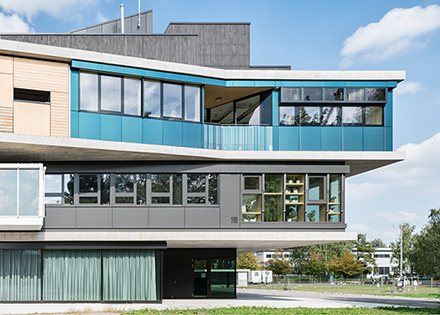
Among the multi-functional technologies installed on the SolAce facades, colored nanotechnology-based glazing for PV modules and solar thermal collectors will lead to a positive energy balance over the whole year for the unit through the production of solar electricity and domestic hot water. Innovative window integrated micro-structured glazing will provide seasonal dynamic management of solar heat gains.
On the demand side, combining working and living spaces in order to mitigate the treated floor area for indoor activities will significantly reduce the heating and lighting energy intensities of the unit as well as its environmental impact. Advanced building sensing and control technologies fostering human-building interaction will provide a user-centric approach favoring users’ comfort and cognitive performance. Made of prefabricated modular wooden elements and mostly equipped with cardboard-made furniture, the SolAce architectural design is also aiming to foster building materials with low embodied energy and carbon content.
Here you find all publications concerning SolAce.
Radio programme (in French) on RTS 1 CQFD of 11 October 2018
The innovation objects in the SolAce unit
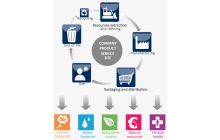
LCA/CO2 methods & tools
The main challenge when applying Life Cycle Analysis (LCA) to the SolAce unit is the fact that the technologies to be implemented are under development, which potentially implies a lack of information and data. Assumptions will be necessary to study not only prototypes, but also prospective products in case of successful commercial development. The assessment of the whole SolAce unit as well as its objects of innovation will be performed using a state-of-the-art database and methodologies following a standardized framework.
Partner: Quantis
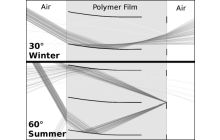
Light/Heat redirecting 3D microstructures
A novel glazing type with embedded micro mirrors that are invisible to the eyes is to be used to increase the daylight provision in a room through redirection of sunlight to the ceiling. The redirection of daylight provides a more uniform work plane illuminance and reduces glare risks. Moreover, solar gains are modulated as a function of the annual dynamic variation of the sun course: high gains in winter reduce heating loads and low gains in summer mitigate overheating risks as well as the cooling demand.
Partner: BASF
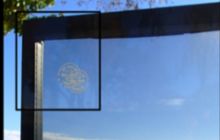
Laser-treated selective glazing
This novel glazing was developed to foster mobile telecommunication in railway wagons: it can also be implemented on building envelopes and/or inside buildings. The glazing provides a high thermal insulation by means of a selective coating (e.g. e-coating) and is accordingly suitable for application in hot and cold climates. The laser-treated glass panes can be cut to measure and assembled for multiple glazing with the desired dimensions. The glazing is compatible with all common standard supports and can therefore be easily installed by glazing professionals.
Partner: AGC-VIM
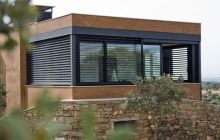
Anidolic venetian blind
Grinotex Sinus slats not only look good: they are also very effective. Their curved form guides intrusive light rays to the ceiling in a similar way as non-image forming optical systems (e.g. anidolic systems), which are known for their undisputable high luminous efficiency. A comfortable ambiance is thus guaranteed; if a dark room is needed for any reason, Grinotex Sinus slats can also be fully closed using a sealing lip.
Partner: Griesser
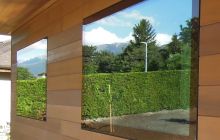
Structural glazing & wood construction
Pollux windows are a revolution that originated in the automotive industry: these wood-glass-glued windows manufactured in Switzerland, offer particularly elegant glazing solutions for wood construction and are as a consequence much appreciated by designers. The windows include several technological innovations resulting from tz menuiserie sa’s in-house research. Flush-mounted design without the need for maintenance is thus also possible in wood. Sika, the company supplier, developed special glues suitable for bonding glass to wood.
Partner: TZ menuiserie SA

HDR vision sensing technology
A novel High Dynamic Range (HDR) vision sensor is developed for an accurate ‘on-the-fly’ monitoring of the lighting conditions in an office environment from an occupant’s point of view (e.g. from his or her work station). The prototype of this technology including in-house software will be implemented in the SolAce unit in order to assess the visual comfort and subsequently to control the sun shading and electric lighting system in an optimal way.
Partner: CSEM
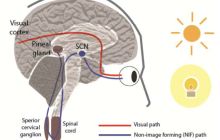
Dynamic & circadian LED lighting
A ‘dynamic lighting pattern’ created to regulate circadian rhythms in building occupants, can lead to an improvement of visual and cognitive performance. The dynamic lighting system is derived from state-of-the-art knowledge about Non Image Forming (NIF) effects of light on human beings. A High Dynamic Range (HDR) vision sensor alongside variable Correlated Color Temperature (CCT) LED-based electric lighting fixtures, will allow implementing this novel lighting strategy. ‘In situ’ experimentation as well as Post-Occupancy Evaluations (POE) will be used to study the positive effects on office workers.
Partner: Regent Lighting
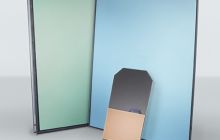
Colored glazing for PV & solar thermal collectors
Coloured glazing for PV modules and solar thermal collectors is based on nanometric multilayered thin films that are produced by environmentally friendly plasma-driven physical vapour deposition. The innovative coatings do not need absorbing pigments for the coloration and are optimized for solar electricity and domestic hot water production. The KromatixTM technology, invented and patented by EPFL, and now commercialized by SwissINSO/Emirates Insolaire, offers new opportunities combining full design flexibility and aesthetics with optimal energy performance for building integration of active solar energy systems.
Partner: Solstis, SwissINSO

